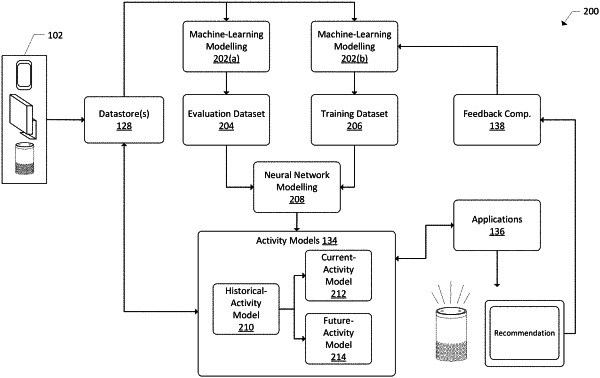| CPC G05B 19/042 (2013.01) [G06F 1/3234 (2013.01); G06N 5/02 (2013.01); G06N 20/00 (2019.01); G05B 2219/2642 (2013.01)] | 20 Claims |

|
1. A system, comprising:
one or more processors; and
non-transitory computer-readable media storing computer-executable instructions that, when executed by the one or more processors, cause the one or more processors to perform operations comprising:
determining a first activity model configured to predict a first state corresponding to an away state indicating absence of user presence and inactivity, wherein the first activity model receives first data representing where a mobile phone associated with a user profile is physically located with respect to a user environment;
determining a second activity model configured to predict a second state corresponding to an active state indicating both user presence and user activity, wherein the second activity model receives second data representing when a user device in the user environment was last interacted with by a user;
determining a third activity model configured to predict a third state corresponding to an asleep state indicating user presence and inactivity, wherein the third activity model receives the first data and the second data;
storing third data indicating a historical usage pattern of an electronic device in the user environment, the historical usage pattern indicating operational state of the electronic device with respect to time;
receiving fourth data indicating a first operational state of the electronic device at a first time;
determining, utilizing the third data and the fourth data, that the electronic device is historically in a second operational state instead of the first operational state;
determining, utilizing the third activity model, that the user profile is associated with the asleep state at the first time; and
causing the electronic device to transition to the second operational state in response to the user profile being associated with the asleep state and determining that the electronic device is historically in the second operational state.
|